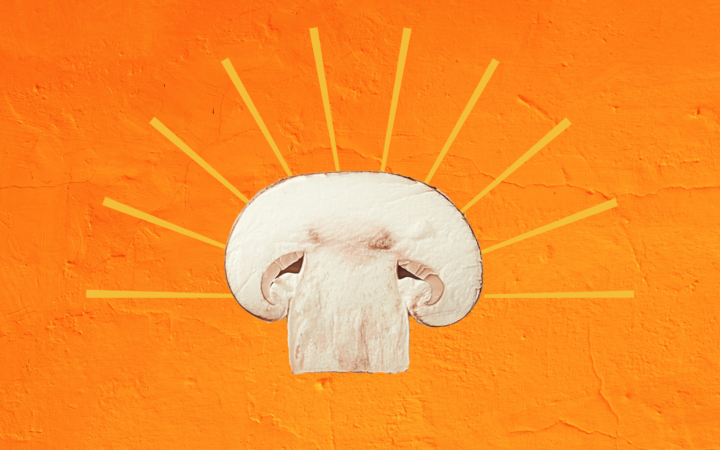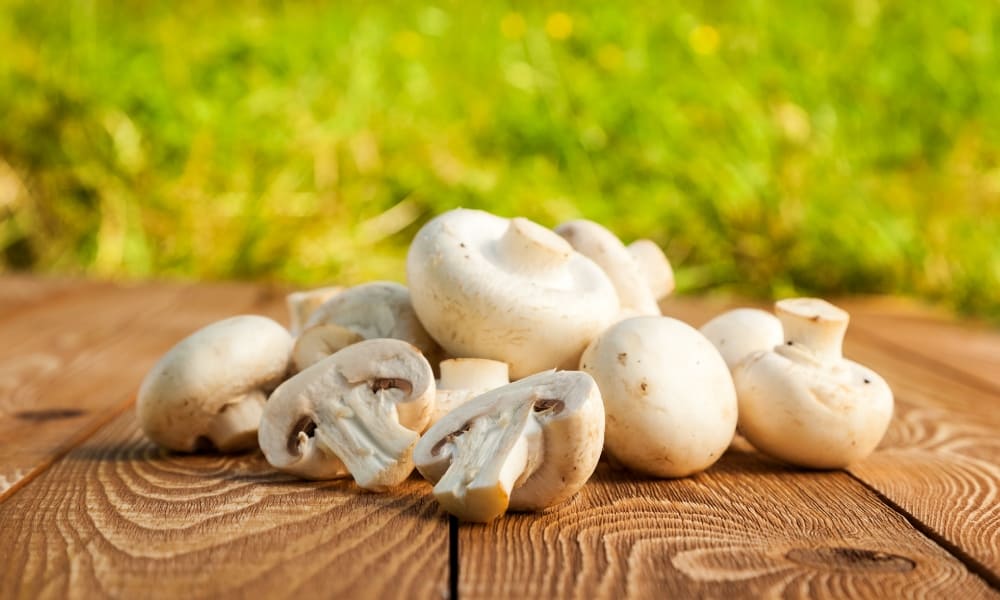Do Mushrooms Have Vitamin D? Here’s What The Science Says

As we in the northern hemisphere approach the end of a particularly brutal winter of polar vortexes, record snowpack, and intense storms, most of us are longing for a dose of sunshine.
Obviously, those blue sky days raise the spirits and allow us to get back to the outdoor activities we love – hiking, swimming or just lounging. But the sunshine is also feeding our biochemical need for that elusive Vitamin D.
But did you know that you can also get your Vitamin D from mushrooms? Yes, you read it right.
Let’s read on to see what the science says.
Why Do We Need Vitamin D?
Vitamin D helps us to absorb calcium from the foods we eat and also blocks the body’s release of a parathyroid hormone which makes bones thin and fragile by reabsorbing bone tissue.
Basically, vitamin D is critical for promoting strong, healthy bone growth. Without it, children can develop rickets (soft bones) and adults osteomalacia (brittle, misshapen bones).
Vitamin D is also important for muscle strength and performance and taking it daily has been shown to reduce the risk of falling in older people.
There are many other purported health benefits of vitamin D, some quite controversial. For instance, studies have shown that it might help prevent colon, prostate and breast cancers and treat diabetes, heart disease, high blood pressure and multiple sclerosis. Impressive. But since many of these results are either preliminary or the subject of debate, more extensive research is needed.
Are We Getting Enough Vitamin D?
A 2017 study published in the Journal of the American Osteopathic Association estimated that around 1 billion worldwide people suffer from Vitamin D deficiency.
That’s about 15% of the world’s population… pretty staggering.
Because of this, many have started to consider taking vitamin d supplements, or seeking out food sources that are naturally high in this all-important vitamin.
Do Mushrooms Have Vitamin D? The Facts
Sunshine isn’t the only source of vitamin D. It’s also found in eggs, fatty fish, calves liver, sheep’s wool, and – to the relief of vegans and vegetarians everywhere – mushrooms. In fact, mushrooms are one of the only non-animal sources of Vitamin D available.
It’s important to note, however, that there is more than one form of vitamin D, namely Vitamin D2 and Vitamin D3.
Animal sources contain more D3, while mushrooms contain D2. However, the New England Journal of Medicine conducted a pretty exhaustive comparison of the two and found that, aside from D3’s longevity (it sticks around in the bloodstream for several weeks, not just days like D2), there was no real advantage to taking one type over another.
However, in order to maximize their vitamin D content, mushrooms also need their time in the sun, so they can get exposure to UVB radiation.
A study in Dermato-Endocrinology (Holick, 2012) found out that,
“Mushrooms exposed to sunlight or UV radiation are an excellent source of dietary vitamin D2 because they contain high concentrations of the vitamin D precursor, provitamin D2.
When mushrooms are exposed to UV radiation, provitamin D2 is converted to previtamin D2.
Once formed, previtamin D2 rapidly isomerizes to vitamin D2 in a similar manner that previtamin D3 isomerizes to vitamin D3 in human skin.”
So, in other words, mushrooms are a bit like us – they need the ultraviolet light from the sun to convert the precursor to vitamin D which they naturally contain (called ergosterol) into usable active form of vitamin D.

Sunbathing Mushrooms?
Almost. So how are mushrooms exposed to the right amount of sunlight or UV radiation?
Since mushrooms are commonly grown in the dark, this requires a departure from normal practices, but it is happening.
Retailers are starting to sell mushrooms labeled as “UV exposed”, “sunlight treated” or simply “high in vitamin D”.
Robert Beelman, Professor Emeritus of Food Science at Penn State University was one of the first to try this vitamin D enrichment process. He learned that pulsing high-intensity UV beams at the mushrooms could drastically increase the levels of vitamin D (measure in IU or “international units”)- and, as an added bonus, surface-sterilize them too.
In his study, Beelman used white and brown button, oyster and shiitake mushrooms. After just one pulse of light (the lamp used in the experiment generated 3 pulses per second, so this was quick), the white button mushrooms showed an increase from an initial vitamin D2 level of 0% per serving to 325%. After 4 pulses this had increased to 824%.
However, the results in the shiitake and oyster mushrooms were even more impressive. The shiitakes went from an initial value of 3% vitamin D2 per serving to 490% after one pulse and 1200% after 3 pulses. The oysters went from an initial value of 15% per serving to 1618% after 3 pulses.
Do Try This At Home
You can give mushrooms you have grown or purchased the DIY treatment by placing them out in the sun or under a UV lamp.
This will significantly boost their vitamin D content, even if the mushrooms have been picked, sliced or dried. In fact, studies have shown that using sliced mushrooms can be better, as they have more surface area for UV absorption.
The increase in vitamin D levels from letting your dried mushrooms laze in the sun will last for up to a year (although values may fall over time). Better – and tastier – than a supplement pill.
Are All Mushrooms Created Vitamin D Equal?
Beelman’s study (referred to above) might suggest that the shiitake and oyster mushrooms are much more responsive to vitamin D enrichment. However, his study explained that their results could have been due in part to the methodology used in the experiment to accommodate their physical size and structure.
So, if you want to buy enriched mushrooms, or treat some you’ve grown or bought, which variety is best to maximize your vitamin D intake?
Since DIY vitamin D enrichment is still in its relative infancy, we don’t yet have the definitive answer. The best advice is to use your favorites and focus more on your methods than the specific variety.
Make sure you place entire mushrooms with the gills facing the sun, or alternatively slice them for maximum sun exposure.
15 minutes of direct sun should be enough to get sufficient UVB light.
Top Tips For Getting Your Mushroom Vitamin D Fix
Do mushrooms have vitamin D? Absolutely, if they’re exposed to the right amount of sunshine. In summary, to make sure you’re getting maximum vitamin D benefits from your mushroom, you should:
- Choose your favorite varieties of fresh mushrooms
- Select “UV exposed” from the grocery store
- Or treat them at home – laying them sliced (or whole and “gills up”) out in the sun or on a window ledge
- Enjoy your enriched mushrooms for up to a year (as part of a balanced diet of course)
- Marvel at how strong your bones and muscles feel!

